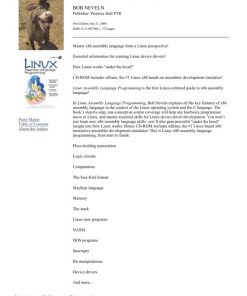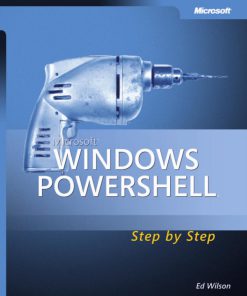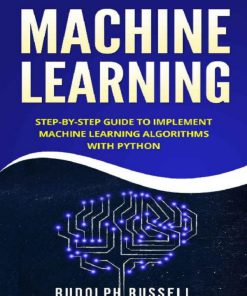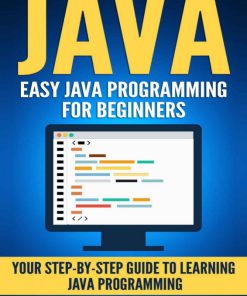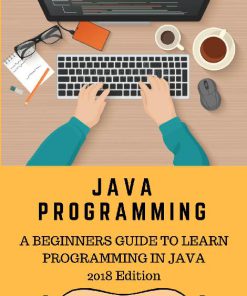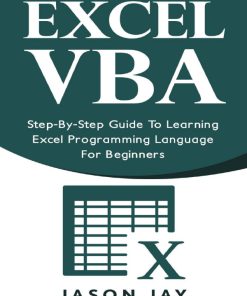Assembly Language Step by Step Programming with DOS and Linux 2nd Edition by Jeff Duntemann ISBN 0471375233 9780471375234
$50.00 Original price was: $50.00.$25.00Current price is: $25.00.
Authors:by Jeff Duntemann , Series:Computer Science [266] , Author sort:Duntemann, by Jeff , Ids:0471375233 , Languages:Languages:eng , Publisher:John Wiley & Sons , Comments:Comments:Published 2000, 613 pages.
Assembly Language Step-by-Step-Programming with DOS and Linux 2nd Edition by Jeff Duntemann – Ebook PDF Instant Download/Delivery. 0471375233, 978-0471375234
Full download Assembly Language Step-by-Step-Programming with DOS and Linux 2nd Edition after payment

Product details:
ISBN 10: 0471375233
ISBN 13: 978-0471375234
Author: Jeff Duntemann
The bestselling guide to assembly language-now updated and expanded to include coverage of Linux
This new edition of the bestselling guide to assembly programming now covers DOS and Linux! The Second Edition begins with a highly accessible overview of the internal operations of the Intel-based PC and systematically covers all the steps involved in writing, testing, and debugging assembly programs.
Expert author Jeff Duntemann then presents working example programs for both the DOS and Linux operating systems using the popular free assembler NASM. He also includes valuable information on how to use procedures and macros, plus rare explanations of assembly-level coding for Linux, all of which combine to offer a comprehensive look at the complexities of assembly programming for Intel processors.
Providing you with the foundation to create executable assembly language programs, this book:
* Explains how to use NASM-IDE, a simple program editor and assembly-oriented development environment
* Details the most used elements of the 86-family instruction set
* Teaches about DEBUG, the single most useful tool you have as an assembly language programmer
* Examines the operations that machine instructions force the CPU to perform
* Discusses the process of memory addressing
* Covers coding for Linux
The CD-ROM includes:
* Net-Wide Assembler (NASM) for both DOS and Linux
* NASM-IDE, a command shell and code editor for DOS
* ALINK, a free linker for DOS programming
* All program code examples from the book
Assembly Language Step-by-Step-Programming with DOS and Linux 2nd Table of contents:
Part I: Welcome to Assembly Language
-
What Is Assembly Language?
- Understanding Low-Level Programming
- How Assembly Differs from High-Level Languages
- The Role of Assemblers and Linkers
-
The Basics of Computer Architecture
- Memory and Registers
- The CPU and Instruction Set
- How Code Executes
-
Working with Development Tools
- Setting Up Your Development Environment
- Assembling and Linking Your Code
Part II: The Basics of x86 Assembly Language
-
Registers and Memory
- General Purpose Registers
- The Stack and Memory Segmentation
-
Instruction Set Fundamentals
- Data Movement Instructions
- Arithmetic and Logic Instructions
- Control Flow and Jump Instructions
-
Assembly Language Syntax
- Writing Assembly Code
- Understanding Labels and Directives
Part III: Assembly Language Programming Under DOS
-
Using DOS Interrupts
- Basics of Interrupts and BIOS Calls
- Working with File I/O and Keyboard Input
-
Writing Small DOS Programs
- Displaying Text on the Screen
- Handling User Input
-
Advanced DOS Programming
- Working with Files
- Handling Errors and Debugging
Part IV: Assembly Language Programming Under Linux
-
Introduction to Linux Assembly
- Differences Between DOS and Linux Assembly
- Setting Up a Linux Environment
-
Linux System Calls
- Making System Calls in Assembly
- Working with File Descriptors
-
Writing Simple Linux Programs
- Displaying Messages
- Reading from and Writing to Files
-
Advanced Linux Programming
- Dynamic Memory Allocation
- Error Handling and Debugging Techniques
Part V: Advanced Assembly Language Concepts
-
Macrology and High-Level Constructs
- Creating and Using Macros
- Looping and Conditional Structures
-
Optimizing Assembly Code
- Speed vs. Size Optimization
- Profiling and Analyzing Code
-
Interfacing with High-Level Languages
- Calling Assembly from C
- Passing Data Between Assembly and C
People also search for Assembly Language Step-by-Step-Programming with DOS and Linux 2nd:
assembly language step by step programming with linux
how to start assembly language programming
what is assembly language programming with example
assembly language step-by-step
can you program arduino in assembly
You may also like…
eBook PDF
Linux Assembly Language Programming 1st Edition by Bob Neveln ISBN 0130879401 9780130879400




